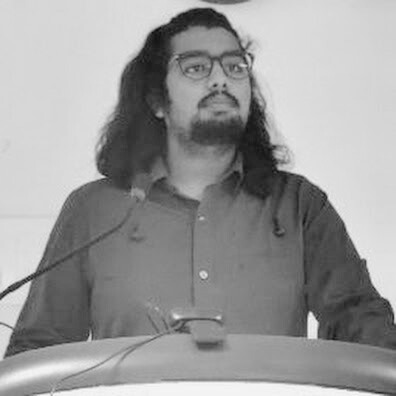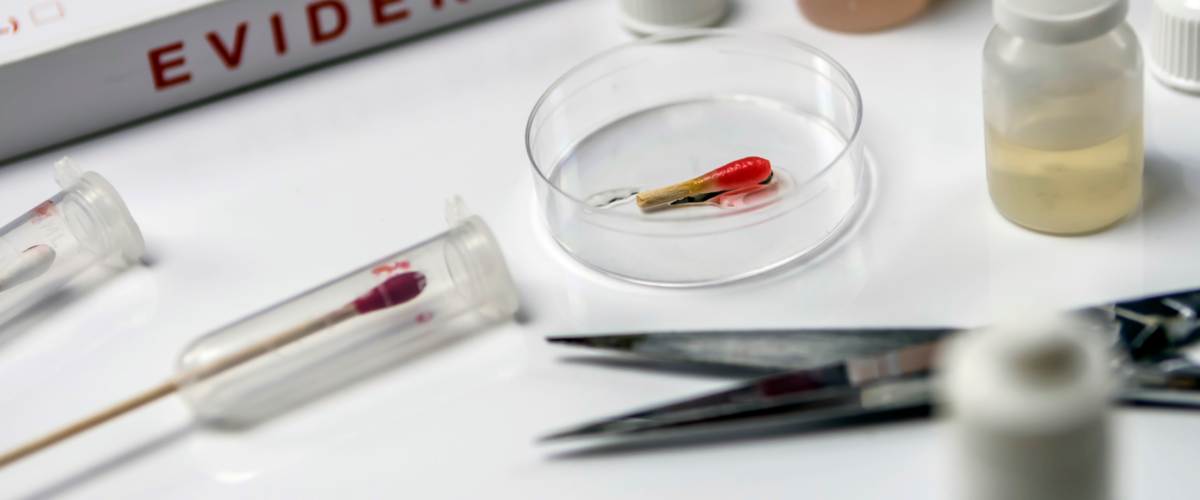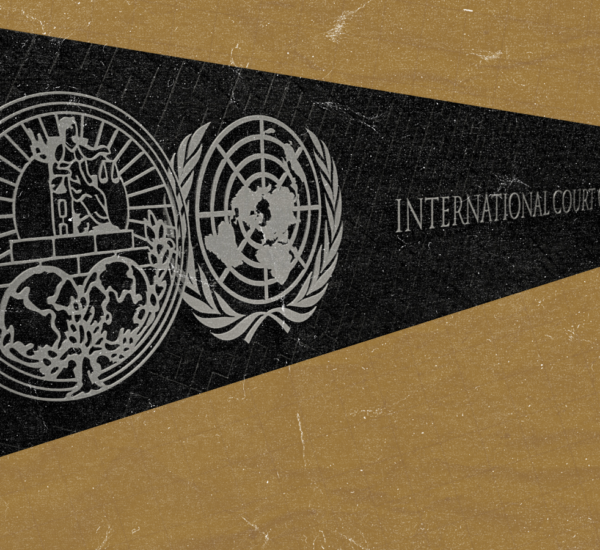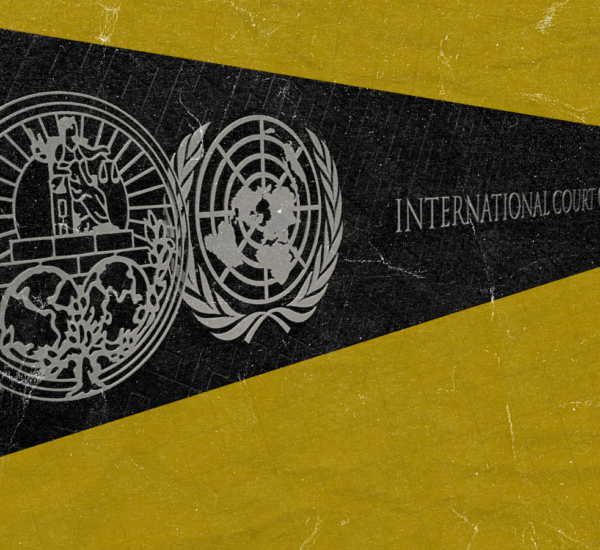
Abhineet Maurya
The idea that the opinions of an ‘expert’ are relevant facts that the law should weigh in its deliberation of the facts of any case has an important assumption underlying it. Namely, that there exist some independent methods or processes, which are in the special knowledge of a person called an ‘expert’, through which we can achieve a semblance of objectivity concerning some aspects of the natural or human world which become necessary for the adjudication of some cases. These methods or processes may pertain to art as well as science. Forensic sciences constitute some of the most frequent uses of ‘expert’ evidence in criminal jurisprudence and in adjudication more broadly.
What makes evidence based on scientific theory probative is the associated scientifically rigorous nature of these methodologies employed, producing verifiable and reproducible results. The goal of this article is to ask, how do Courts judge whether or not the methodology through which a piece of evidence is presented is scientific or not (i.e. how does a Court make a determination about the foundational validity of scientific evidence)? What separates something like DNA evidence, in which our judicial system puts such high faith, from narco-analysis, which is generally deemed to be unreliable? The article is divided into six parts. The first section introduces the idea of ‘science’ and discusses what separates scientific from unscientific or pseudo-scientific knowledge. The second section relates the idea of scientificity to law through the idea of the ‘foundational validity’ of forensic evidence. The third section introduces the distinction between the Frye and Daubert standards for foundational validity as it exists in the US. The fourth section looks at the Indian practice concerning expert evidence, where no formal test exists to evaluate foundational validity. The fifth section argues that not evaluating forensic evidence on the touchstone of foundational validity at all is arguably inconsistent with the doctrine laid down by the Supreme Court, where a standard similar to Frye can be observed. The sixth section argues as to why we need to move from deference-based standards like Frye to deliberation-based standards like Daubert.
Science and Scientific Knowledge
‘Science’ is a term that the Indian Evidence Act, 1872 (“IEA”) uses but does not define. There is disagreement in philosophical literature about what exactly constitutes science and what could be classified as scientific knowledge. However, propositions by philosophers over the years highlight some important principles of scientific knowledge.
David Hume characterised science as a form of inductive reasoning. This means that science makes general claims by collecting specific evidence which supports the general claim. This implies that science can never make claims to absolute truth, as inductive reasoning itself never makes an absolute causal link between the claim and the evidence, but only makes the claim more probable with more evidence. Logical empiricists like Carnap and Schlick argued that for a claim to be scientific, it needs to be verifiable through empirical evidence. Karl Popper, in a similar vein, argues that what separates a scientific claim from a non-scientific one is that the former can be falsified, i.e., they can be discovered to be false based on evidence.
Stress is being laid down here on criteria like ‘verifiability’ and ‘falsifiability’ to make the point that there is a difference between a claim being ‘untested’ and ‘unscientific’. An untested hypothesis may or may not become a scientific theory. However, if the claim is ‘untestable’ in that no matter what empirical evidence is provided, the claim cannot be verified or falsified, then the claim is ‘unscientific’.
Foundational Validity and the Truth-Seeking Function of the Law
Science, therefore, cannot yield absolute truth. However, it can be argued that the law does not seek it either (p. 3). It only seeks to provide the most optimal and fair context within which a verdict can be given. To obtain this context, the evidence presented in the Court should be probative, and the claims that experts make should be grounded in scientifically valid practices. The 2016 report of the US President’s Council on Science and Technology titled ‘Forensic Science in Criminal Courts: Ensuring Scientific Validity of Feature-Comparison Methods’ (“PCAST report”) characterises validity of forensic evidence into two types: Foundational Validity and Validity as Applied. When we speak of challenging the validity of forensic evidence as applied, we assume that the scientific principles on which an expert has given an opinion are valid, but the manner in which they have been used is incorrect. Challenging the foundational validity itself means claiming that the principles on which the expert has made the determination are themselves unscientific and lack probative value. This becomes relevant given the problematic history India has had with patently unscientific ‘truth-seeking’ techniques like narco-analysis, brain-mapping, etc. These unscientific practices may also be deeply linked with the prejudices of society. An example of such practice is the two-finger test banned a decade ago by the Supreme Court which is based on patriarchal notions of ‘virginity’ and a woman’s ‘habituation to intercourse’ as being not only relevant but also verifiable facts.
The focus of this article is on forensic evidence which is of dubious scientificity, probative value, and foundational validity. This includes techniques like analysis of bite marks, footprints, voice, fingerprints, etc. which have caused a lot of anxiety in recent times. A good illustrative example of such evidence in use would be the case of State of Georgia v. Sheila Denton (2020). Denton had been convicted for the murder of one Eugene Garner based on bite mark evidence or forensic odontology. However, years after the conviction, the scientific opinion on bite marks changed as studies revealed that bite marks are not as unique as previously thought and identification based on forensic odontology possesses far less certainty than originally thought. These studies were picked up by the PCAST report (p. 83-87) and were the basis of the revision of the bite mark identification guidelines of the American Board of Forensic Odontology (“ABFO”) in 2018. Based on these new findings about the reliability of bite mark evidence, the conviction of Sheila Denton was overturned in 2018, and she was finally acquitted in 2020. The treatment of bite mark evidence in India, as in Mukesh v. State of NCT Delhi (2017), has been less than inspiring. The Court went on to state:
“Forensic Odontology has established itself as an important and indispensable science in medico-legal matters and expert evidence through various reports which have been utilised by the courts in the administration of justice. In the case at hand, the report is wholly credible because of matching of bite marks with the tooth structure of the accused persons and there is no reason to view the same with any suspicion.” [242]
The decision in Mukesh and Sheila Denton came around the same time, which makes the juxtaposition between them interesting. Both had access to literature indicating the problematic nature of bite mark evidence. While it is true that Sheila Denton also had the benefit of examining the revised guidelines on bite mark evidence, the scientific literature as well as the PCAST report were available in both cases. It is my contention that the difference in their findings is rooted in the way how the Courts in India and the US have historically understood expert evidence and used it in practice.
Foundational Validity in the US: A Tale of Two Standards
In the US, the Federal Rules of Evidence, 1975 (“Federal Rules”) are quite clear on what is required of experts furnishing evidence in Court. Clause (c) of Rule 702 mandates expert testimony to be based on “reliable principles and method” (foundational validity) while clause (d) requires the expert to have reliably applied the principles and methods to the facts of the case (validity as applied).
However, the first rule for determining the foundational validity of expert opinion in the US predates the Federal Rules. The standard laid down in Frye v. United States in 1923 continued to be the defining standard for judging the validity of expert testimony for seven decades. The matter related to the validity of the systolic blood pressure deception test as evidence. The Court laid down the “general acceptance” standard stating that “while courts will go a long way in admitting expert testimony deduced from a well-recognized scientific principle or discovery, the thing from which the deduction is made must be sufficiently established to have gained general acceptance in the particular field in which it belongs.” On the basis of this standard, the Court stated that the deception test had “not yet gained such standing and scientific recognition among physiological and psychological authorities” so as to justify the use of the test as evidence in expert testimony.
While this test did lay a baseline for foundational validity, it had its issues. The source of the issues with the standard stemmed from the fact that the test was merely formal, looking at the general acceptance of a methodology by the scientific community. It did not have, for instance, the ability to take into account new, however, scientifically strong evidence produced through rigorous scientific study, merely because its novelty prevented it from having the status of ‘general acceptance’.
This problem was sought to be addressed by the US Supreme Court in Daubert v. Merrell Dow Pharmaceuticals in 1993. The petitioners in the case alleged that they were born with serious birth defects owing to the respondent’s drug ‘Bendectin’. The point of contention was that established scientific literature did not find a causal link between Bendectin and birth defects. However, new studies based on different methodologies did show such a link. The question was whether these new studies could be accounted into evidence, despite being barred by the ‘general acceptance’ standard. Claiming that with the coming of the Federal Rules, the Frye standard had been superseded, the Court laid down the following factors in considering whether the methodology is valid:
- whether the theory or technique in question can be and has been tested;
- whether it has been subjected to peer review and publication;
- its known or potential error rate;
- the existence and maintenance of standards controlling its operation; and
- whether it has attracted widespread acceptance within a relevant scientific community.
Note that in Daubert widespread acceptance is only one of the many factors that the Courts have to consider while evaluating the validity of an expert’s methodology. The Daubert test goes beyond looking at acceptability and pierces into the scientific rationality of the methodology. Quoting Karl Popper, the Court goes on to state that “[s]cientific methodology today is based on generating hypotheses and testing them to see if they can be falsified; indeed, this methodology is what distinguishes science from other fields of human inquiry.” This enables the Court to look into new, emerging and yet scientifically sound studies in relation to forensic evidence and incorporate them into evidence.
Daubert standard is the current standard used by US Federal Courts and several State Courts in relation to scientific and technical evidence, while some State Courts continue to use the Frye standard.
Expert Testimony: Indian Courts in Practice
Indian Courts do not have a developed standard to judge the foundational validity of expert evidence. While evaluating expert testimony, the Courts usually look at two things: the qualifications of the expert, and the principled nature of the testimony (Ramesh Chandra Agrawal v. Regency Hospital Ltd., 2009, [11]). In the former test, the Court looks at whether the expert has experience with the particular issue in question. For instance, in State of HP v. Jai Lal (1999), the Court did not consider it enough that the expert witness had a general qualification in horticulture, stating that the expert was required to have expertise in the particular issue, that is, assessing apple crops. In the latter test, the Court examines whether the opinion is principled and supported by logical reasoning or it is based on ad hoc judgment. For instance, in the case of a handwriting expert, the expert should be able to give an opinion on how to differentiate two near identical handwriting samples without having them in hand (Manu Sharma v. NCT of Delhi, 2007 [71]).
The role of the expert is not to be a witness of a fact, but merely to furnish the necessary scientific criteria to test the accuracy of the conclusions so that the Judge can form his independent judgment by applying these criteria to the evidence in the case (State of HP v. Jai Lal, 1999). However, what is the criteria for the validity of the principles themselves, it is unclear. The practice of the lower Courts is clear in that no such standard is actually used to cross-check the scientific and foundational validity of the evidence presented in Courts. However, the question remains whether an argument for such a standard can be made within the Indian framework of expert evidence.
Searching for Foundational Validity in the IEA
As stated earlier, Section 45 of the IEA does not define the term ‘science’. The Courts themselves have also not undertaken such a discussion, presumably because the poor drafting of the provision gives no impetus to such an exercise. However, some standard of scientific validity can be read into the way that the Courts have interpreted the second leg of the validity of expert evidence.
In Ramesh Chandra Agrawal v. Regency Hospital Ltd. (2009), the Court stated that the principles used by the expert need to be ‘reliable’ and the expert needs to be from a ‘recognised field of expertise’. The Court, however, never defines or attempts to explain what these terms mean. In State v. SJ Choudhary (1996), a Constitution bench of the Supreme Court, while examining the admissibility of the evidence of a typewriting expert, made a similar observation. The Court stated that the opinion formed by the expert should be based on “recognised principles” regulating the scientific study. However, the precedential value of this holding is unclear as the Court, in a confused construction, ended up recognising typewriter evidence as valid not because of the scientific nature of the methodology used to analyse it, but rather based on it being analogous to handwriting evidence, which is explicitly mentioned in Section 45.
The closest the Court comes to having a substantive discussion on the issue of foundational validity is in an obiter in Selvi v. State of Karnataka (2010). While the question of law in the case concerned the issues concerning the narco-analysis test vis-a-vis self-incrimination, it did touch upon the questionable scientific validity of the test. The Court stated that for any scientific technique to be valid, it should have been subjected to rigorous independent studies and peer review. The Court quoted the Daubert standard to describe how the validity of the methodology or a scientific technique can be assessed. However, there is little precedential value to this statement given that the scientific validity of the narco-analysis test was not a question before the Court.
The strongest case for the foundational validity of scientific evidence in India can be made from the holding of the three-judge bench of the Supreme Court in Veer Pal Singh v. Ministry of Defence (2013) where the question of the judicial review of the report of an expert body came into issue. The case concerned the disability pension of an armed forces personnel, with the prime question of fact being whether or not the schizophrenic reaction of the appellant was aggravated by the service. The Armed Forces Tribunal found that the condition of the appellant was “constitutional and not aggravated by military service” based on an earlier assessment by a psychiatrist who had characterised the appellant’s “quarrelsome, irritable and impulsive” behaviour as signs of a schizophrenic reaction. In this case, the Court castigated the Tribunal for mechanically accepting the finding of the expert. It stated that the Tribunal should have looked at medical literature and dictionaries. The Court further analysed the scientific literature on schizophrenia to decide that observations of the expert were substantially incompatible with the scientific literature on the issue and hence the decision must be set aside.
Moving from Deference to Deliberation: The Way Forward
While the Courts in India do not have an elaborate standard for judging the foundational validity of scientific evidence, it is the argument of the author that, drawing from the above discussion, the Courts have laid down a standard that is similar to the one laid down in Frye. The terms used in these cases mirror the terminology used by the Court while laying down the Frye standard in the US, and there is no substantive analysis of the scientificity of the nature we observe in Daubert.
The pertinent question then is, whether India should expand on the general acceptability standard or evolve a substantive standard for reviewing the methodology of scientific evidence as observed in Daubert. Common law jurisdictions like the United Kingdom, New Zealand, and Canada have adopted the Daubert standard. The problems with the Frye standard mainly pertain to the fact that it substitutes deference to knowledge as a substitute for rational deliberation, which is considered a reproach to the deep aspirations of the legal system to obtain rational results. However, the Daubert standard too has its detractors. The principal one among them being Chief Justice Rehnquist himself, who, along with Justice Stevens, authored the dissenting opinion in Daubert. Rehnquist’s objection to the Daubert standard was that it is not exactly clear what is meant by the ‘falsifiability’ of a theory, or what the criterion of ‘refutability’ or ‘testability’ entails. He believed that federal judges have neither the obligation nor the authority to become ‘amateur scientists’ while trying to determine the admissibility of expert testimony. The other set of detractors believe that Daubert did not go far enough. The model that these critics propose is that expert testimony should be treated like any other testimony. The judge and the jury should be educated on the relevant matters, and that process of educating the fact finder about the topics in these scientific matters would itself reveal the weaknesses and falsities in the evidence. However, the objection to this model is the high costs involved in terms of time and training. It may or may not be possible to execute such a system in the West. It will certainly be a serious challenge to implement it in India considering the huge resource constraint in law enforcement.
Regardless of the model that India chooses to employ, it is clear that there is a need for a concrete standard for judging the admissibility of expert testimony. The substantive and rational nature of the Daubert standard makes it an attractive option. It is suitable to take into account the scientific developments which bring into doubt the foundational validity of evidence, despite their hitherto general acceptance by the scientific community.
Conclusion
The interpretive strategy that the Indian Courts need to adopt in order to rationalise the system of forensic evidence in India is to define the term ‘science’ used in Section 45 of the IEA. Defining the term ‘science’ would have an effect similar to laying down a standard of scientificity or foundational validity, except that the standard here would be of legislative origin rather than judicial. This definition must include a term that does not merely defer to general acceptance, which, arguably is the standard espoused by the doctrine as it presently stands, albeit not enforced in practice. The definition should have a substantive definition of ‘science’, which clearly separates scientific from non-scientific methodologies or the methodologies which, as a consequence of further scientific evidence, have been deemed unscientific. This will ensure that rational deliberation and the truth-seeking function of the law are preserved in the way forensic evidence is appreciated in India.
Abhineet Maurya is a student at the National Law University, Delhi.






[…] Abhineet Maurya, Foundational Validity in Forensic Evidence: Issues with the Indian Approach, The Project […]